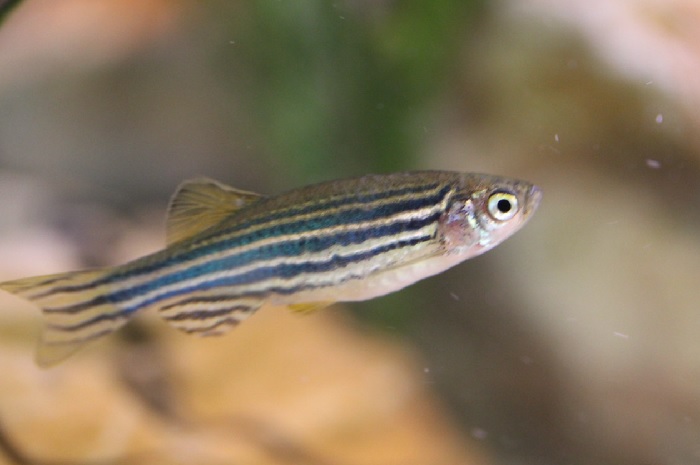Most fishkeepers must be quite familiar with black phantom tetras – a fish species from central Brazil and northern Paraguay. Their peaceful and calm nature makes them a terrific option for almost any community tank. And for those who wonder about their unique name, that tile stems from the “eye patch” under their gills. It’s as if some black phantoms are peering at your face!
In wild environments, tetras often swim in big groups and schools, so you should also ensure they have compatible mates to make friends and socialize with.
We are glad to lend a helping hand in this regard. Our insightful article will discuss all there is to know about black phantom tetra tank mates!

Contents
Which Fish Can Be Good Black Phantom Tetra Tank Mates?
Their best mates should still be other phantom tetras. Experts recommend keeping them in groups of six (if that’s not affordable for you, then in pairs). Ensure there’s a healthy mixture of females and males to keep territory issues at bay.
What about fish keepers that like to mix tetras with other fish types? In that case, remember to choose carefully and wisely. The rule of thumb is avoiding aggressive creatures or fish significantly larger than phantom tetras.
Options are abundant, but here are some of our favorites:
1. Zebra Danios

They are long-standing favorites of many fish-keeping hobbyists, mostly due to their little to no requirements in terms of care and maintenance.
Even better, zebra danios are among the easiest egg layers and breeders, producing eggs within weeks of breeding. Their zebra-patterned, striped white and black bodies make them recognizable and outstanding among many other tank inhabitants.
What impresses us, even more, is that zebrafish can be pretty durable, withstanding impressive water temp and condition ranges. There’s no need to install any water heater in the tank – since zebras are comfortable with temps below 60 degrees F.
And unlike major fish species, they stay loyal to their life mate and breeding partner, eliminating the need to buy new fish for every breeding season.
Furthermore, their small size (not exceeding 2.5 inches) comes in handy as black tetra tank mates. (Although they sometimes like nipping tetra’s fins, this habit is not dangerous most of the time).
Other wonderful companions for zebras – besides tetras – also include swordtails, loaches, gouramis of the same size, corydoras, catfish, and barbs.
One last thing to note: zebras are among the most active creatures known to date, moving throughout the whole tank. Hence, we suggest you offer them open swimming areas and diffuse lighting. Substrates of darker colors will help the fish’s colors pop while delivering a more genuine feel for the habitat.
2. Honey Gourami

In most cases, honey gouramis stick closely to the aquarium’s top half. Why so? It’s because they are categorized as labyrinth creatures, which means periodical visits to the surface for more oxygen are a must. Getting stuck all the time at the tank’s bottom – far away from the fresh air – simply makes no sense!
Like zebras, honey gouramis are active yet peaceful community fish. They always avoid starting troubles with other tank mates like tetras, which turns them into a heavenly pair for your aquarium. Smaller gouramis are also pretty shy; they often retreat to hiding spots if a tetra (or any other mate) gets too close. Larger species also spook their nerves easily.
(Still, some honey gouramis are also famous for their curiosity; despite never engaging in fights, they like snooping around to find out what is going on!)
Another thing we must remind you: although tetras and honey gouramis get along well, experts discover that the latter thrives best when living among other gouramis.
Hence, if you want to buy them as tetra tank mates, it would be best to purchase 3-4 at one go! The presence of their kind makes gouramis feel safer and happier, leading to longer lifespans and low-stress levels.
3. Harlequin Rasbora

Like gouramis, tetras, and zebras, rasboras fall under the category of shoaling fish, meaning they should live among large schools of at least eight members. Larger numbers than that will be even better, making beautiful displays for your tanks!
Rasboras can go well with any creature – not just phantom tetras – as long as it’s not predatory and large. We have never seen any rasbora that likes fighting, quarreling, or nipping their companions.
Some common candidates for their tankmates include tetras, danios, cory catfish, dwarf gouramis, small barbs, and, of course, other rasboras of similar or smaller sizes.
Known as a freshwater animal, rasboras thrive best in freshwater. It’s rare to see them live in brackish water or any other type of liquid body. And Southeastern Asia’s lowland ponds are their ultimate favorites, where the waters are acidic and soft.
Furthermore, they also prefer living spaces with dense vegetation, open swimming areas, subdued lighting, and dark substrate – jot them down to establish their tank properly!
On another note, tanks with harlequin rasboras should include some live plants, too. (you should also check to see whether those plants suit the phantom tetras and other fish mates). A popular plant choice among seasoned fishkeepers is the Cryptocoryne, which inhabits the rasbora’s native water.
What about foods and diets? Harlequin rasboras are pretty undemanding, accepting all kinds of snacks – from insects, flake foods, and frozen foods to freeze-dried products. Try to incorporate as many types into their weekly diet as possible, ensuring disease susceptibility or digestive problems can never occur!
Conclusion
This article has listed three common choices for black phantom tetra tank mates. All of them are easy to care for, undemanding when it comes to food, and rarely start fights.
Keep some tips above in mind to prepare the best living conditions for them, and ask for our help if you encounter problems!

